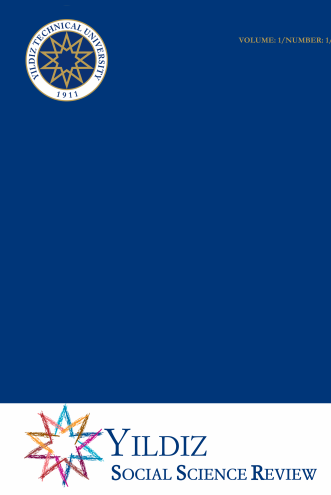KOMPLEKSITE İKTISADI ÇERÇEVESINDE KEYNES VE KEYNESYEN MAKRO İKTISAT: METODOLOJIK BIR ANALIZ
Ekonomiyi, lineer olmayan karşılıklı etkileşimler ve geri besleme süreçlerini de içeren kompleks bir sistem olarak analiz etmek gerektiği iddiasındaki kompleksite iktisadı, şimdilik ana akım iktisadın yerini alma iddiasında bulunmadan onunla etkileşim içinde ancak onun genelde göz ardı ettiği pek çok önemli kavramı yer yer ana akım iktisada da hatırlatarak gelişimini sürdürmektedir. İzlerini Schumpeter, Hayek, Keynes, Simon ve hatta Smith’e[1] kadar sürebileceğimiz kompleksite iktisadı 1980’lerden bu yana iktisatçıların fizikten, biyolojiye pek çok farklı disiplinden bilim insanları ile biraraya geldiği Santa Fe Enstitüsü gibi kurumlar sayesinde gittikçe daha çok taraftar bulmaktadır (Hommes, 2013, 1). Kompleksite iktisadının ele aldığı ekonomi dengede olmak zorunda değildir, bu yaklaşımda hesaplama ve modellere dayalı simülasyonlar, formel matematik kadar önemlidir, yine ekonomik dinamikler azalan getiriler kadar artan getirile[2] de sergileyebilirler (Arthur, 2015, 2). [1] Hommes, Smith’i listesine dahil etmemiştir.
Anahtar Kelimeler:
Kompleksite İktisadı, Keynesyen Devrim, İktisatta Zaman ve Belirsizlik
Complexity economics, which considers the economy as an evolving and adaptive complex system with nonlinear interactions and feedback loops, has developed besides mainstream economics and it has reminded us numerous important topics like uncertainty, heterogeneous expectations, bounded rationality, herd effect, that are generally ignored by the mainstream. Early traces of this approach can be followed from Schumpeter, Hayek, Keynes, Simon and also Smith (Hommes, 2013). Economic system, taken by complexity economics is not necessarily in equilibrium and agents change their actions in response to actions of others (Arthur, 2015). Purpose of this study is to demonstrate the similarity between the Keynesian Revolution as an example of Kuhnian paradigm shift and the complexity economics and also to call attention to potential contributions of complexity economics through its computation and simulation capacity to develop a new approach in economic theory.
___
- Colander, D. (2010). The Keynesian Method, Compexity and the Training of Economics. Middlebury College Economics Discussion Paper.Eren, E., & Öğüt, K. (2009). Matematik ve Fizik ile Etkileşimi Çerçevesinde Yerleşik İktisat ve "Yeni İktisat". D. Dileyici (Dü.), YEBKO Yönetim ve Ekonomi Bilimleri Konferansı. içindeKeynes, J. M. (2013). The Collected Writings of John Maynard Keynes (Cilt 14). (D. Moggridge, Dü.) Cambridge University Press.Öğüt, K. (2017). Kuantum Teorisi – Matematiksel Formalizm ve Genel Denge İktisadı. Ç. Ö. Boz (Dü.) içinde, İktisat ve Diğer Bilimler (s. 43-94). İletişim Yayınevi.Rodrik, D. (2015). Economics Rules. Oxford University Press.Stanfield, R. (1974, March). Kuhnian Scientific Revolutions and the Keynesian Revolution. Journal of Economic Issues, 8(1), 97-109.Ward, B. (1972). What's Wrong with Economics? Macmillan.
- ISSN: 2149-4363
- Başlangıç: 2015
- Yayıncı: Yıldız Teknik Üniversitesi
Sayıdaki Diğer Makaleler
n≥30 vs. n=all: Büyük Veri, Veri Obezitesi ve Kaybolan Nedensellikler
KAPİTALİZMİN KRİZLERİNİ MINSKY’NİN FİNANSAL İSTİKRARSIZLIK HİPOTEZİ ÇERÇEVESİNDE ANLAMAK
Kıyametin Dört Atlısı: Marx, Weber, Schumpeter ve Polanyi
Hegel’den Marx’a : « Olumsuzun emeği »
KOMPLEKSITE İKTISADI ÇERÇEVESINDE KEYNES VE KEYNESYEN MAKRO İKTISAT: METODOLOJIK BIR ANALIZ
